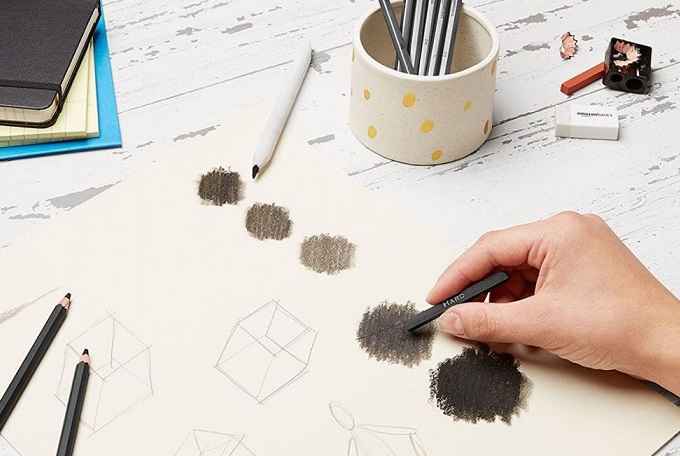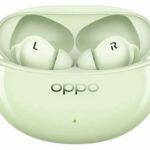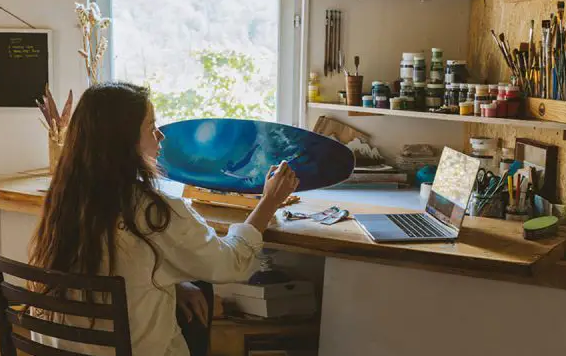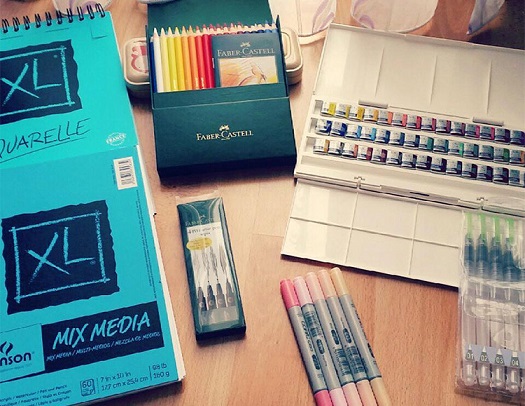10 Must-Have Art Supplies for Beginners
Must-Have Tools for Artists – If you want to learn how to draw or paint and are wondering what materials you’ll need, this list of art supplies for beginners covers 10 products every new artist should own. In this article, you’ll learn about each type of supply and learn how to choose the best ones for beginners and where to buy them.
Art Supplies for Beginners
What art supplies do I need to paint?
Here are the supplies you’ll learn about in this article:
- Sketchbook
- graphite pencil
- kneading eraser
- art pencil sharpener
- ruler
- Watercolor or acrylic paint set
- oil paint brush
- Watercolor paper pad or canvas pad
- Plastic paint palette or palette paper pad
- color wheel
Sketchbook
A sketchbook is a must-have for learning to draw. Whether you’re planning to take a painting class or teach yourself, this project should be first on your list. A sketchbook can be used to draw shapes, practice composition, shading, and other drawing techniques. Even if drawing is your primary interest, a sketchbook is the perfect place to plan your drawing before tackling other materials.
What kind of sketchbook should I buy?
9″ x 12″ (22.9 x 30.5 cm) is a good size for beginners.
Look for 50 to 65 lbs. Grammage paper (74 to 96 gsm)
Tip: Once you’ve learned the basics of drawing, consider buying a drawing tablet as well. Drawing tablets are made of heavier paper, better suited for getting the job done.
Art Supplies for Beginners
-
Graphite Drawing Pen
Graphite pencils can be used to draw everything from the simplest sketches to highly detailed compositions. They can be purchased individually or as a set. The sets are great for beginners as they have a variety of pencil types for drawing and coloring. A typical set of six pencils comes in 2H, HB, B, 2B, 4B, and 6B. These numbers correspond to the hardness of graphite.
- Drawing Pencils 101
- Harder pencils produce lighter lines (pencil numbers with an “H”).
- Softer pencils produce darker lines (pencil numbers with a “B”).
-
Knead the eraser
An eraser is a must-have for removing pencil marks. This particular type of art eraser won’t damage the paper or leave a residue. It can be molded into various shapes and used to erase large or small areas.
-
Art Pencil Sharpener
A pencil sharpener keeps your pencil sharp for easy drawing. The metal handheld pencil sharpener is easy to use and allows you to see the tip of the pencil as you sharpen it. This helps prevent the pencil tip from being oversharpened and broken.
What kind of pencil sharpener should I buy for sketching?
- 8mm single-ended (standard pencil size) or double-ended sharpener with 8mm and 10.5mm holes for thicker pencils
- Tips: When the sharpener or blade is not sharpening well, please replace it.
- One 18″ stainless steel cork feeler gauge
- Cork feeler gauge
- Basic 12″ Ruler
- 18″ stainless steel cork feeler gauge
-
Ruler
A ruler is an important tool for drawing horizons, streets, buildings, or any other straight line. Choose from 12″ or 18″ (30 or 45 cm) rulers made of stainless steel or anodized aluminum. These types of rulers are easy to keep clean.
Tip: Some artists prefer “cork” rulers because they can be fixed to paper or canvas.
-
Watercolor or acrylic paint set
Watercolor and acrylic paint are two of the best options for those learning to paint. They are all water-based, so no paint thinner is required for painting or cleaning up. Beginners can learn basic drawing skills by taking courses, books, videos, or online tutorials.
Here is some information on choosing watercolor paints:
What type of watercolors should I buy?
Choose a clear watercolor pan set with eight to twelve colors.
What is Transparent Watercolor?
There are three types of watercolor paints: transparent, translucent, and opaque. Clear watercolors have that sheer look that most people associate with this type of paint.
Choose Acrylic Paints
What kind of acrylic paint should I buy?
Look for a set of heavy-duty acrylics that come in tubes. The heavy body paint shows brushstrokes but can be thinned with water for a smoother look.
What color acrylic paint should I buy?
Buy a starter kit that includes at least six colors: red, yellow, green, blue, black, and white.
Here are a few colors to start with if you buy a tube of paint individually:
- Red (cadmium red medium or naphthol deep red)
- yellow (in cadmium yellow)
- Green (phthalo green, shades of blue, aka “phthalo green”)
- Blue (ultramarine, green)
- Purple (Dioxazine Violet)
- brown (raw amber)
- Black (Mars Black)
- white (titanium dioxide)
Tip: Buy two tubes of white, as the extra white will help blend the colors.
-
Brushes
Once you have your paint, you’ll need some brushes. If you visit an art supply store, you’ll find a variety of types to choose from: natural or synthetic bristles, long or short stems, and all shapes and sizes.
To keep things simple when you’re learning how to paint, choose a beginner brush set for watercolor or acrylic painting. Set includes a variety of brushes for different painting techniques.
What type of brush should I use?
Both natural and synthetic bristle brushes can be used for watercolor and acrylic painting. Natural bristle brushes tend to show strokes, while synthetic bristles leave smooth lines. If you’re not sure which one to choose, try both and see which one you like best.
Gold Taklon brushes are a great choice if you plan to paint with watercolors and acrylics. This synthetic brush material is durable and works with many types of paint. One of my favorite sets is the Royal Langnickel Soft-Grip 5-Piece Starter Set. They are affordable, well-made brushes for watercolor and acrylic painting.
Tip: Experiment with different shapes and sizes of brushes as you gain experience.
-
Watercolor paper pad or canvas pad
Watercolor and acrylic painting can be done on a variety of surfaces, but mats are one of the easiest for beginners to learn how to paint.
Watercolor Paper Pad: Watercolor paper is thick enough to handle water without warping. Look for “cold pressed” watercolor paper pads with 140 lb (300 GSM) weight paper. Cold-pressed paper has a certain texture and is easier to paint on.
Canvas Pad: A canvas pad is a great surface for those new to acrylic painting. It has tear-off paper that is primed and can be painted over.
Tip: Start with a 9″ x 12″ (22.9 x 30.5 cm) watercolor or canvas pad.
-
Plastic paint palette or palette paper pad
You need a palette to mix colors or dilute them with water to paint. Plastic palettes can be used for watercolors and acrylics. Choose one that is at least 7 inches.
Disposable color palette pads are another option for painting. It gives more room to mix colors and makes cleanup easier.
-
Color wheel
The color wheel is another useful tool for new artists. It explains some basic facts about colors and shows which colors to mix to create new ones.
Where To Buy Art Supplies
Local art supply store – The supplies listed in this article should be available at your local art supply store. The advantages of buying locally are viewing supplies before buying, having someone available to answer any questions you may have, and supporting local businesses.
Buy Art Supplies Online – These supplies can also be found at online art supply stores and other online retailers. Some of the advantages of buying art supplies online include access to more brands, reading customer reviews on products, and sometimes more competitive prices.
Other Useful Supplies for Artists
Small water container for painting:
- Artistic smock or apron
- A roll of masking tape
- tissue
- Scissors
- paint brush cleaner
- Scotch tape
- Art Supplies Storage Box





















